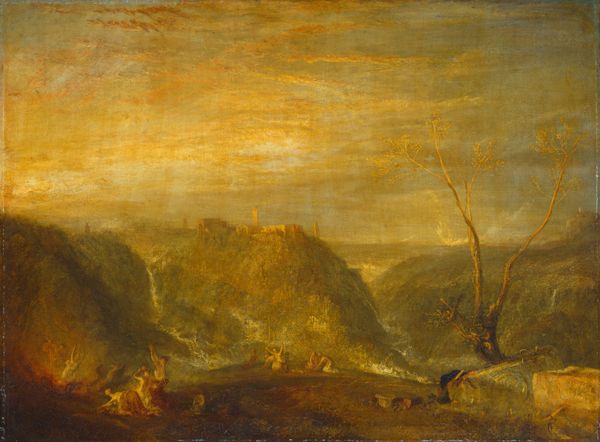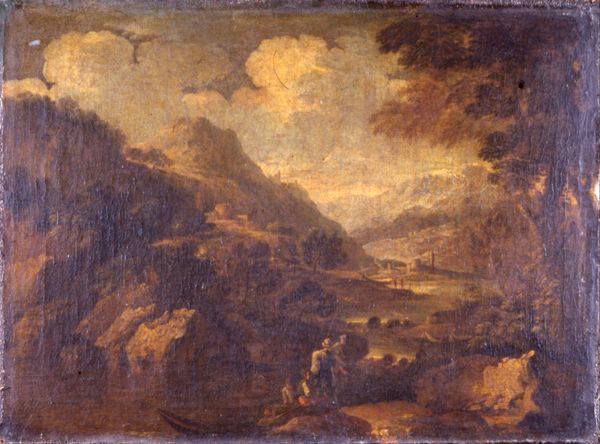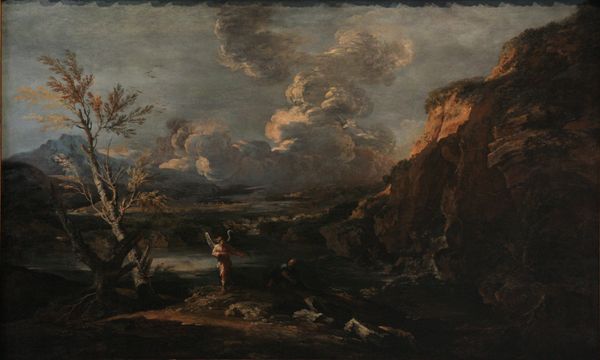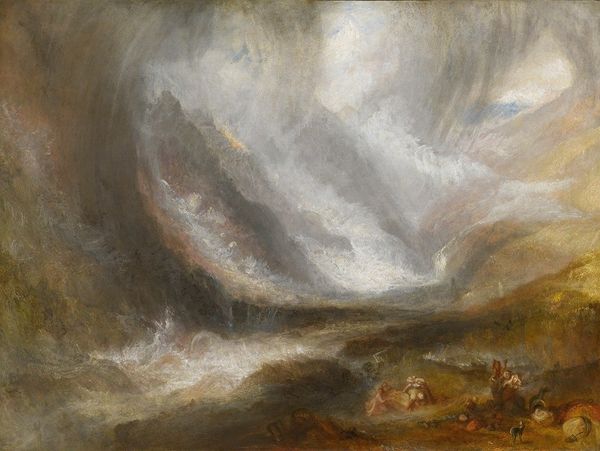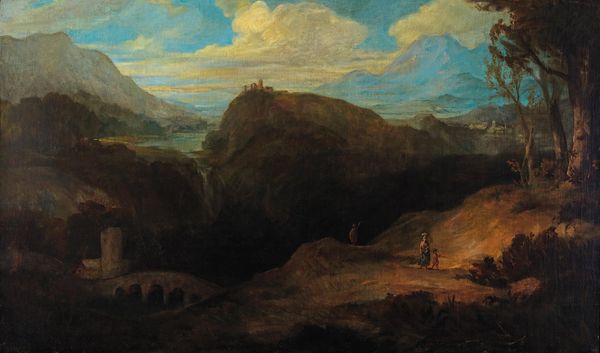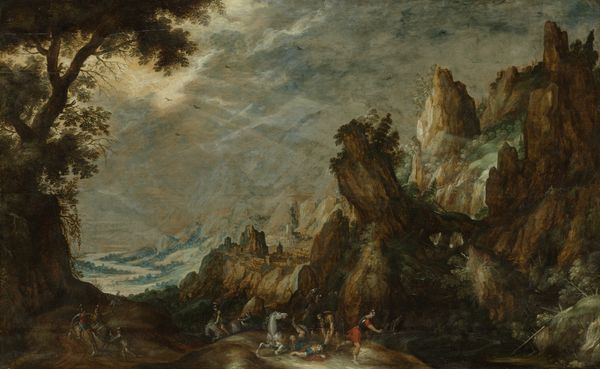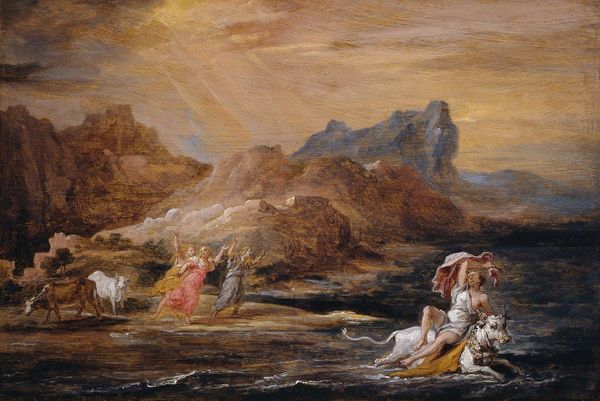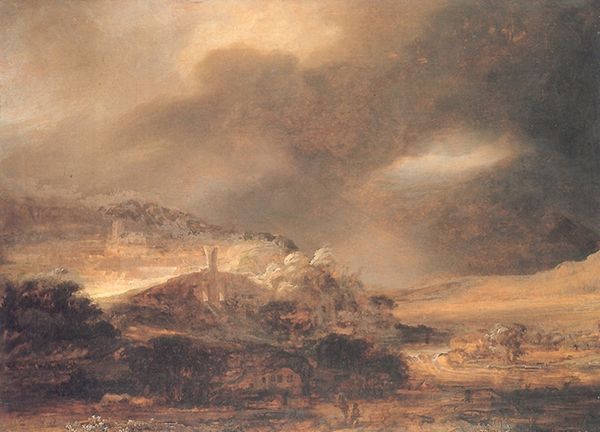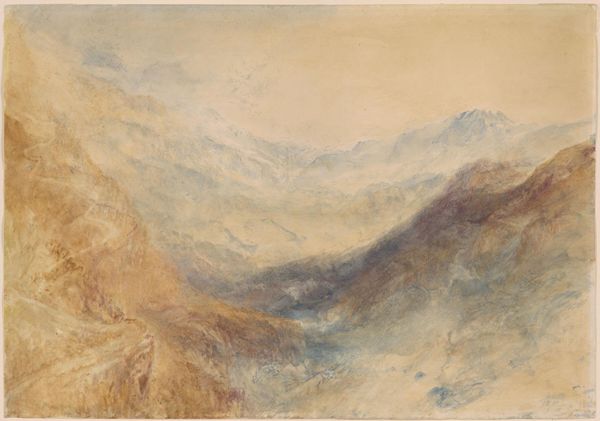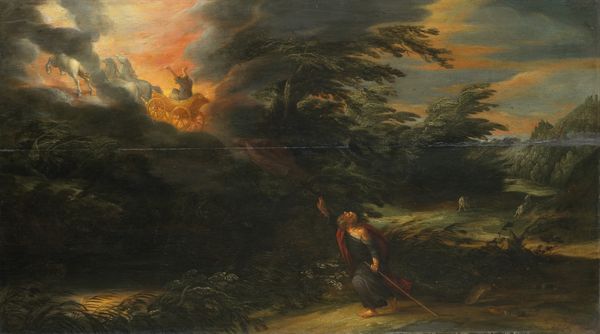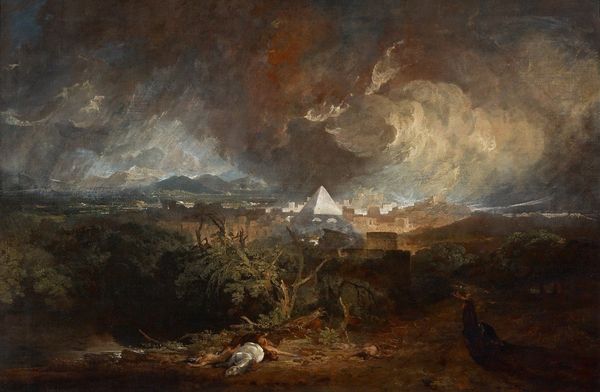
Dimensions: support: 1067 x 3048 mm frame: 1395 x 3375 x 90 mm
Copyright: CC-BY-NC-ND 4.0 DEED, Photo: Tate
Curator: Here we have George Frederic Watts's "Chaos," held at the Tate. Editor: It's immense! The scale immediately overwhelms you. The raw, churning forms feel almost geological. Curator: Watts explores the creation myth, the moment before order, using the human figure as elements within a primordial soup. Notice the huddled figures—they represent unrealized potential, the raw material of humanity. Editor: But look at the application of paint. It's so loose, almost gestural. He's not crafting a polished allegory, but rather revealing the sheer labor of forming something from nothing. What kind of brushes would produce such textures? Curator: Exactly! The figures emerge from the murk, symbols of nascent humanity struggling for form and consciousness. They are us, on the verge of being. Editor: I see both a beginning and also just raw materials and labor. It really puts the work of creation in perspective, both the artist's and…well, creation itself. Curator: Watts truly invites us to contemplate the very origins of our being. Editor: Indeed, a real lesson in the nature of both art and, well, existence itself.
Comments
Join the conversation
Join millions of artists and users on Artera today and experience the ultimate creative platform.
tate 8 months ago
⋮
Watts intended Chaos to be the ‘opening chapter’ of the House of Life. He said the painting ‘conveys ... an idea of the passing of our planet from chaos to order’. On the left, giants struggle to release themselves from formless fire and vapour. The central figure, emerging from the water, suggests survival. Towards the right, measurable time is signalled by the chain of female figures. In 1884, a version of Chaos was exhibited in a Watts solo show at the Metropolitan Museum of Art, New York. It was the museum’s first retrospective dedicated to a living artist. Gallery label, June 2021
